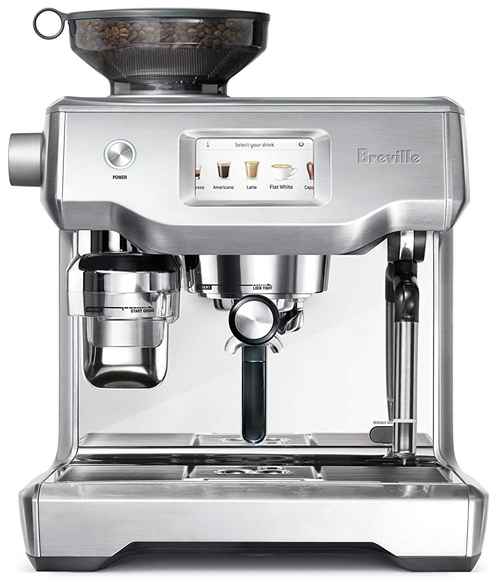Japanese Matcha Tea Latte Recipe [+Tips]
Note: This page contains affiliate links.
As an Amazon Associate, I earn from qualifying purchases when you click on the link, but you are not charged extra.
Oh, matcha – just saying the word conjures up images of vibrant green powder, serene tea ceremonies, and a beautifully creamy cup that feels both ancient and ultra-trendy. If you haven’t yet experienced the magic of a Japanese Matcha Tea Latte, you’re in for a treat. This isn’t just any latte; it’s a harmonious blend of earthy, slightly sweet matcha green tea powder whisked into creamy milk, creating a drink that’s equal parts energizing, soothing, and downright delicious.
- Old World Christmas Beans: Tastes like the holidays in every cup — discover the cozy magic of Old World Christmas Beans before the season slips away.
- Kirkland Sumatra French Roast : Dark, bold, and wildly smooth—why Kirkland’s Sumatra French Roast is the best-kept secret of serious coffee drinkers.
- Hot Fudge Whole Bean Coffee : What happens when dessert meets coffee? Meet the decadent whole bean that tastes like hot fudge—but better.
- Aroma Ridge Guatemala Antigua Medium Roast : From the highlands of Guatemala to your morning mug—this rich, balanced roast is waking up coffee lovers everywhere.
- Juan Valdez Cumbre Colombian Coffee : Crafted by Colombia’s most iconic coffee legend—why Cumbre is a must-try for fans of bold, authentic flavor.
What makes matcha so special? Unlike regular green tea, matcha is made from powdered whole tea leaves, giving it a rich, intense flavor and an impressive nutritional punch – think antioxidants, a gentle caffeine lift, and calming L-theanine. When you turn it into a latte, you get this smooth, velvety texture that feels like a cozy hug in a cup.
Whether you’re looking to spice up your morning routine, want a unique afternoon pick-me-up, or simply love exploring new flavors, this Japanese Matcha Tea Latte is a must-try. Ready to make your kitchen smell like a traditional tea house? Let’s jump in!
- 1 Ingredients For Japanese Matcha Tea Latte Recipe
- 2 How To Make Japanese Matcha Tea Latte?
- 3 Expert Tips
- 4 Recipe Variations
- 5 Final Words
- 6 FAQs
- 6.1 What Is Japanese Matcha Tea Latte?
- 6.2 What Type Of Matcha Powder Should I Use For A Latte?
- 6.3 How Do I Prepare Matcha Powder For A Latte?
- 6.4 What Type Of Milk Works Best In A Matcha Latte?
- 6.5 Should I Heat The Milk Before Mixing It With Matcha?
- 6.6 How Do I Sweeten A Japanese Matcha Tea Latte?
- 6.7 Can I Make An Iced Japanese Matcha Tea Latte?
- 6.8 What Equipment Do I Need To Make A Japanese Matcha Tea Latte At Home?
- 6.9 How Is The Flavor Profile Of A Matcha Latte Different From Regular Green Tea?
- 6.10 Are There Any Health Benefits To Drinking Japanese Matcha Tea Latte?
Ingredients For Japanese Matcha Tea Latte Recipe
Here’s where the magic begins! To craft the perfect Japanese Matcha Tea Latte, you’ll need just a handful of ingredients – simple, wholesome, and accessible. But each one plays a crucial role in delivering that authentic, creamy, slightly grassy, and subtly sweet flavor.
-
High-quality Japanese matcha powder (1-2 teaspoons)
Why it matters: Authentic ceremonial-grade matcha is finely ground, vibrant green, and has a smooth, delicate flavor. Avoid culinary-grade for lattes if you want the best taste.
-
Milk Or Milk Alternative (1 Cup)
Options: Whole milk, oat milk, almond milk, soy milk, or even coconut milk. The choice here affects creaminess and flavor – oat milk is a popular plant-based favorite for lattes because of its natural sweetness and texture.
-
Hot Water (about 2-3 Ounces, Around 175°F/80°C)
Important note: Water that’s too hot can make matcha bitter, so keep it just below boiling.
-
Sweetener (optional, To Taste)
Suggestions: Honey, maple syrup, agave, or simple syrup. Matcha has a naturally mild sweetness, but a little extra can elevate your latte experience.
-
Vanilla Extract (optional, ¼ Teaspoon)
Why: Adds a lovely aromatic note that complements the grassy matcha beautifully.
-
Whisk (preferably A Bamboo Matcha Whisk Or ’chasen’)
Why: A traditional chasen helps create that perfect frothy, creamy texture that’s signature to matcha lattes.
How To Make Japanese Matcha Tea Latte?
Making this latte is a bit like a mini ceremony – but super easy once you get the hang of it. Follow these steps, and you’ll be sipping like a pro in no time:
-
Prepare Your Matcha Powder
- Sift 1-2 teaspoons of matcha into a bowl or cup to break up clumps. This helps it dissolve smoothly without lumps.
-
Add Hot Water
- Pour about 2-3 ounces of hot water (175°F/80°C) over the sifted matcha. Not boiling – we want that perfect sweet spot.
-
Whisk Vigorously
- Using your bamboo whisk or a small regular whisk, briskly whisk in a zigzag or ’M’ motion until the matcha powder is fully dissolved and you have a nice frothy layer on top. This usually takes about 15-30 seconds.
-
Heat Your Milk
- Warm 1 cup of your chosen milk until steaming (don’t boil!). If you want a frothy latte, use a milk frother or whisk it vigorously by hand.
-
Combine And Sweeten
- Pour the steamed milk into the bowl or cup with the whisked matcha. Stir gently to combine. Add your sweetener of choice and vanilla extract if desired, then give it a final stir.
-
Serve Immediately
- Pour into your favorite mug and enjoy your vibrant green, creamy, and perfectly balanced Japanese Matcha Tea Latte!
Expert Tips
To take your matcha latte game from ’pretty good’ to ’wow, that”s amazing”, here are some pro tips you’ll want to keep in your back pocket:
- Invest in good matcha: Not all matcha powders are created equal. Ceremonial-grade powders are smoother, less bitter, and more vibrant. Trust me, the difference is night and day.
- Water temperature matters: Too hot, and your matcha becomes bitter and grassy; too cold, and it won’t dissolve properly. Aim for around 175°F (80°C) for the ideal balance.
- Sifting is key: Matcha powder tends to clump, so sifting it before whisking makes for a smoother, creamier drink.
- Whisk well: Creating a frothy top isn’t just for looks – it ensures even flavor distribution and a lovely creamy texture.
- Try cold brew matcha for summer: Dissolve matcha in a small amount of warm water, then add cold milk and ice for a refreshing iced latte.
- Don’t skip the sweetener if you’re new to matcha: Its natural grassy flavor can be an acquired taste, so a little honey or syrup helps ease you in.
Recipe Variations
One of the best things about matcha lattes? They’re incredibly versatile. Here are some fun ways to mix it up:
- Iced Matcha Latte: Use cold milk and plenty of ice for a refreshing version. You can shake the matcha and water mixture with ice before adding milk for an extra frothy texture.
- Vanilla Matcha Latte: Add a splash of vanilla syrup or vanilla bean paste for a sweet, fragrant twist.
- Spiced Matcha Latte: Stir in a pinch of cinnamon, nutmeg, or even a dash of ginger for a cozy fall-inspired flavor.
- Matcha Coconut Latte: Use coconut milk and top with toasted coconut flakes for a tropical vibe.
- Matcha Protein Latte: Blend your matcha latte with a scoop of vanilla or unflavored protein powder for a nutritious boost.
Final Words
Drinking a Japanese Matcha Tea Latte isn’t just about quenching your thirst; it’s about experiencing a rich cultural tradition wrapped in a modern, delicious package. The vibrant green color alone lifts your spirits, and the smooth creamy taste can quickly become your new daily ritual. Whether you prefer it hot or iced, sweetened or plain, traditional or with a twist, matcha lattes invite you to slow down, savor, and enjoy a moment of calm with every sip.
Plus, with all the health benefits packed into this little green cup – from antioxidants to mental clarity – it’s a win-win for your body and mind.
FAQs
What Is Japanese Matcha Tea Latte?
A Japanese matcha tea latte is a creamy and frothy beverage made by blending high-quality powdered green tea (matcha) with milk and often sweetened to taste. It combines traditional matcha tea with a creamy texture similar to a latte.
What Type Of Matcha Powder Should I Use For A Latte?
For a matcha latte, it is best to use culinary-grade matcha powder, which has a robust flavor suited for mixing with milk and sweeteners. However, if you prefer a more delicate and grassy flavor, you can opt for ceremonial-grade matcha, though it is more expensive.
How Do I Prepare Matcha Powder For A Latte?
To prepare matcha powder, sift about 1 to 2 teaspoons to remove clumps. Then whisk it with a small amount of hot water (around 70-80°C or 158-176°F) using a bamboo whisk (chasen) or a small frother until smooth and frothy before adding milk.
What Type Of Milk Works Best In A Matcha Latte?
You can use any milk according to your preference, such as whole milk for creaminess, low-fat milk for a lighter taste, or plant-based alternatives like almond, soy, oat, or coconut milk. Each type alters the flavor profile slightly.
Should I Heat The Milk Before Mixing It With Matcha?
Yes, heating the milk to around 60-65°C (140-149°F) helps achieve a creamy texture and enhances the latte’s flavor. You can heat it on the stove or use a milk frother to simultaneously heat and froth the milk.
How Do I Sweeten A Japanese Matcha Tea Latte?
Common sweeteners include honey, sugar, agave syrup, or simple syrup. Add the sweetener after whisking the matcha with water and adjust the amount based on your taste preferences.
Can I Make An Iced Japanese Matcha Tea Latte?
Yes, to make an iced matcha latte, whisk the matcha with a small amount of water as usual, then add cold milk and ice cubes. Sweeten as desired and stir well before serving.
What Equipment Do I Need To Make A Japanese Matcha Tea Latte At Home?
Basic equipment includes a matcha bowl or any small bowl, a bamboo whisk (chasen) or a small electric frother, a sifter for the powder, and a milk frother or stove to heat the milk.
How Is The Flavor Profile Of A Matcha Latte Different From Regular Green Tea?
Matcha latte has a richer, creamier taste with a slight sweetness due to the milk and added sweeteners. The matcha powder provides a vegetal, slightly bitter, and umami flavor that is mellowed by the creaminess of the milk.
Are There Any Health Benefits To Drinking Japanese Matcha Tea Latte?
Yes, matcha is rich in antioxidants, particularly catechins like EGCG, which can support metabolism, improve focus due to its caffeine content, and provide calming effects from L-theanine. However, the health benefits can be influenced by the amount of milk and sweeteners used.

